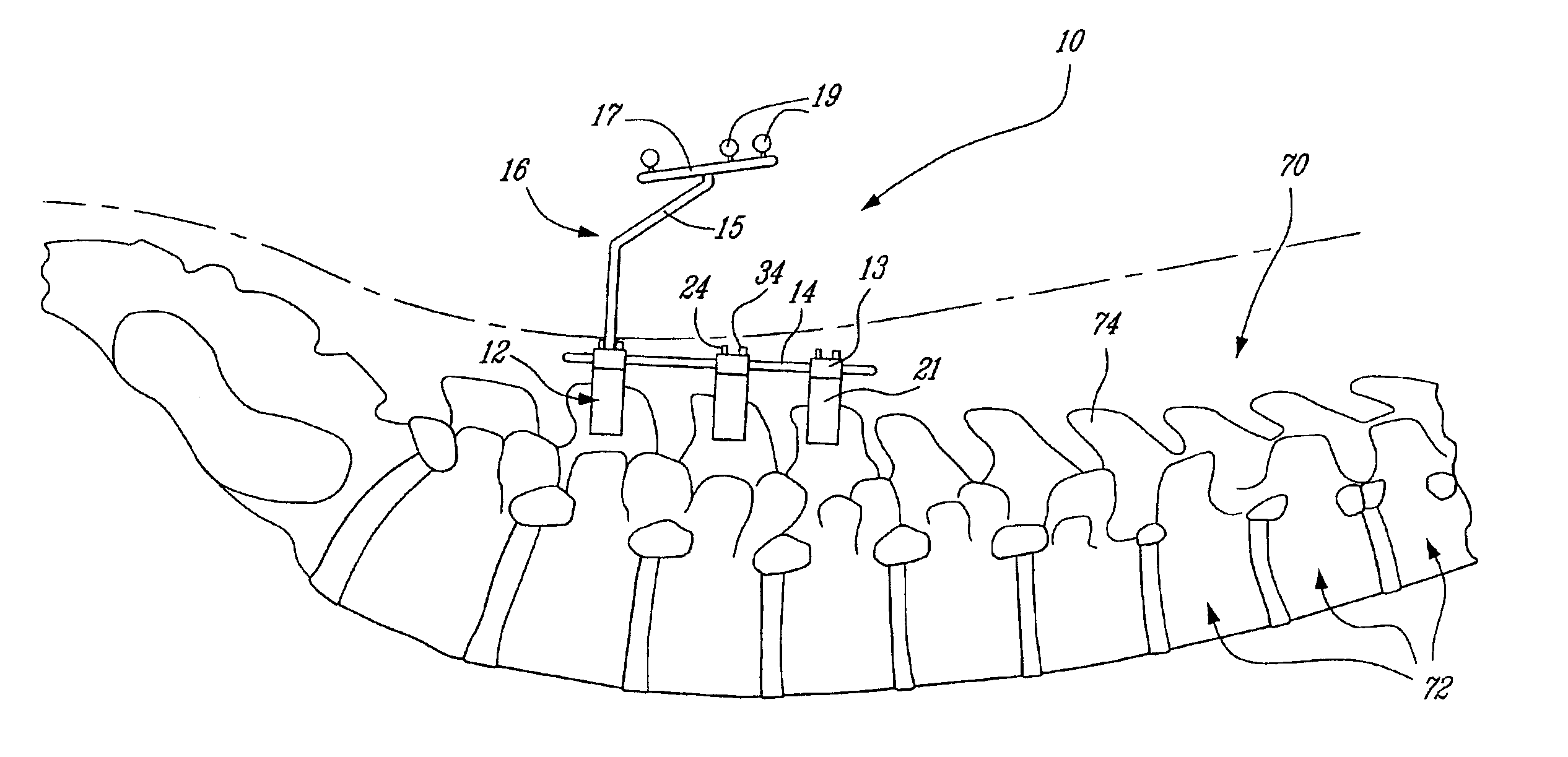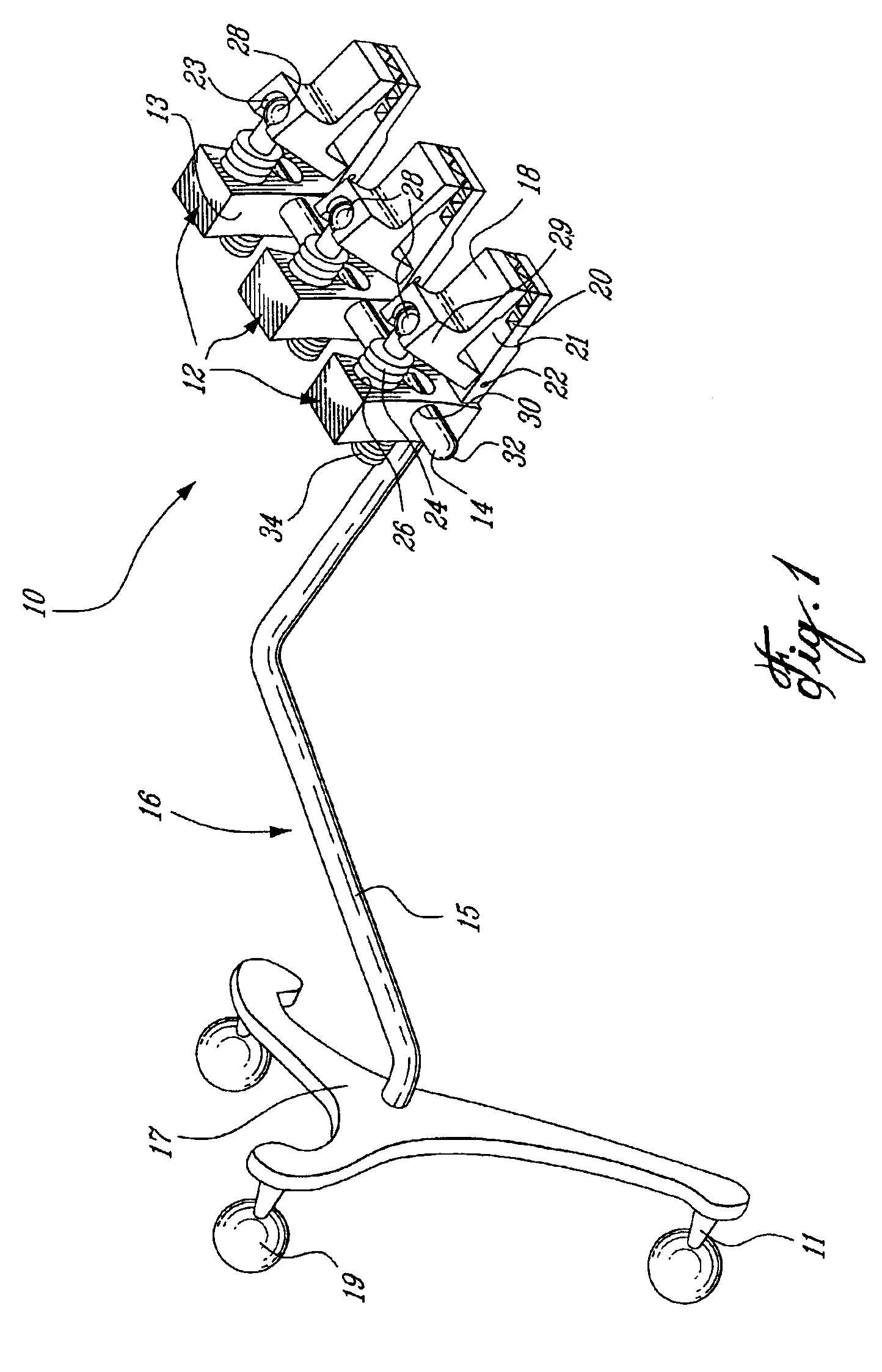Multiple bone tracking
a multi-bone, tracking technology, applied in the field of multi-bone tracking, can solve the problems of significant patient trauma, post-operative pain, and potential error, and achieve the effect of accurate tracking
- Summary
- Abstract
- Description
- Claims
- Application Information
AI Technical Summary
Benefits of technology
Problems solved by technology
Method used
Image
Examples
Embodiment Construction
[0025]Referring to FIG. 1, a surgical bone reference multiple-clamp assembly 10 preferably adapted for use with a CAS system capable of tracking the device. The multiple-clamp assembly 10 generally comprises at least two anchoring members 12 adapted for removably fixation to bones of the patient. The multiple-clamp assembly is preferably for use with vertebrae of the spinal column, such that several vertebrae can be clamped together, restraining all relative movement therebetween, and subsequently tracked as a single body. This permits accurate determination of the position and orientation of several normally articulated bone structures of a linkage without requiring a plurality of trackable members which would clutter the surgical field. When used as a reference clamp for vertebrae, the present multiple-clamp assembly preferably comprises three anchoring clamps 12, adjustably fastened together with a linking bar 14 to form a rigidly connected triple clamp. The trackable member 16 i...
PUM
 Login to View More
Login to View More Abstract
Description
Claims
Application Information
 Login to View More
Login to View More - R&D
- Intellectual Property
- Life Sciences
- Materials
- Tech Scout
- Unparalleled Data Quality
- Higher Quality Content
- 60% Fewer Hallucinations
Browse by: Latest US Patents, China's latest patents, Technical Efficacy Thesaurus, Application Domain, Technology Topic, Popular Technical Reports.
© 2025 PatSnap. All rights reserved.Legal|Privacy policy|Modern Slavery Act Transparency Statement|Sitemap|About US| Contact US: help@patsnap.com



